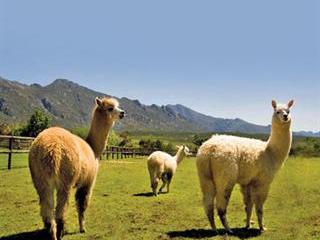More than half the world’s population lives in cities. According to the United Nations, the urban population exceeded the rural population for the first time in history in 2008. growth of urban areas has resulted in the development of mega-cities with populations in excess of 10 million people. The developing world urbanised in the 1950s. While the rate has slowed down in developed countries, it’s accelerated in the developing world, with urbanisation in Asia and Africa expected to grow by 1,8 billion and 900 million respectively by 2050. By 2050 will have an urban population of 3,5 billion while the African urban population will exceed 1,2 billion.
Implications for agriculture
In SA urbanisation is nothing new. In the 1930s drought and depression forced poor white people to move to the cities. This created huge social problems and what was then known as the poor white problem or armblanke vraagstuk. hrough various private initiatives and with the help of government, the problem was tackled and largely solved within 20 years. In SA, we experience formal and informal urbanisation. Both types impact on agriculture.
The population becomes more affluent as more people enter into the mainstream economy and as the new emerging middle class moves to higher income groups. he percentage of the population in the higher income groups (LSM 6 to 10) has increased from 35% in 2001 to 44% in 2007. This growing affluent urban population has specific food requirements summarised by the Bureau for Food and Agricultural Policy as convenience, indulgence, health and culture. Convenience is vital, as the modern affluent city dweller has limited time for food preparation. Urban consumers also want to indulge in their food as their basic needs have already taken care of. Health remains a major selling point among the higher income groups, as pressure from the advertising world and their obsession with perfection and leanness encourages consumers to eat healthier food.
In their world it’s also important to belong – this creates a demand for urban culture-orientated products. A good example of producers having met this kind of consumer demand is that of yoghurts containing probiotics. he urban poor have different needs. Hunger is a major driver and convenience is also a important for them, but they have limited access to electricity for heating up and cooking. Hence, poor urban consumers buy huge bags of cheese-flavoured maize snacks, which they regard as a precooked maize product. They also go for quality brands as they can’t risk buying inedible food or items that spoil quickly.
The challenges Emerging and small-scale farmers find it difficult to provide their own food requirements, let alone to produce enough to feed the hungry urban masses – only the commercial farmers have the know-how and technology to produce food on that scale. Meanwhile consumer resistance to genetically modified (GM) crops is limiting food production. Hungry people don’t have the luxury of choosing non-GM foods and those opposed to it must realise that their stance contributes to famine in African countries. W hile one recognises the right of affluent consumers to decide whether they want to buy a specific product, as well as their right to full disclosure on labels, they shouldn’t be allowed to decide on behalf of those less fortunate than themselves. Dr Koos Coetzee is an agricultural economist at the MPO. All opinions expressed are his own and do not reflect MPO policy. |fw









